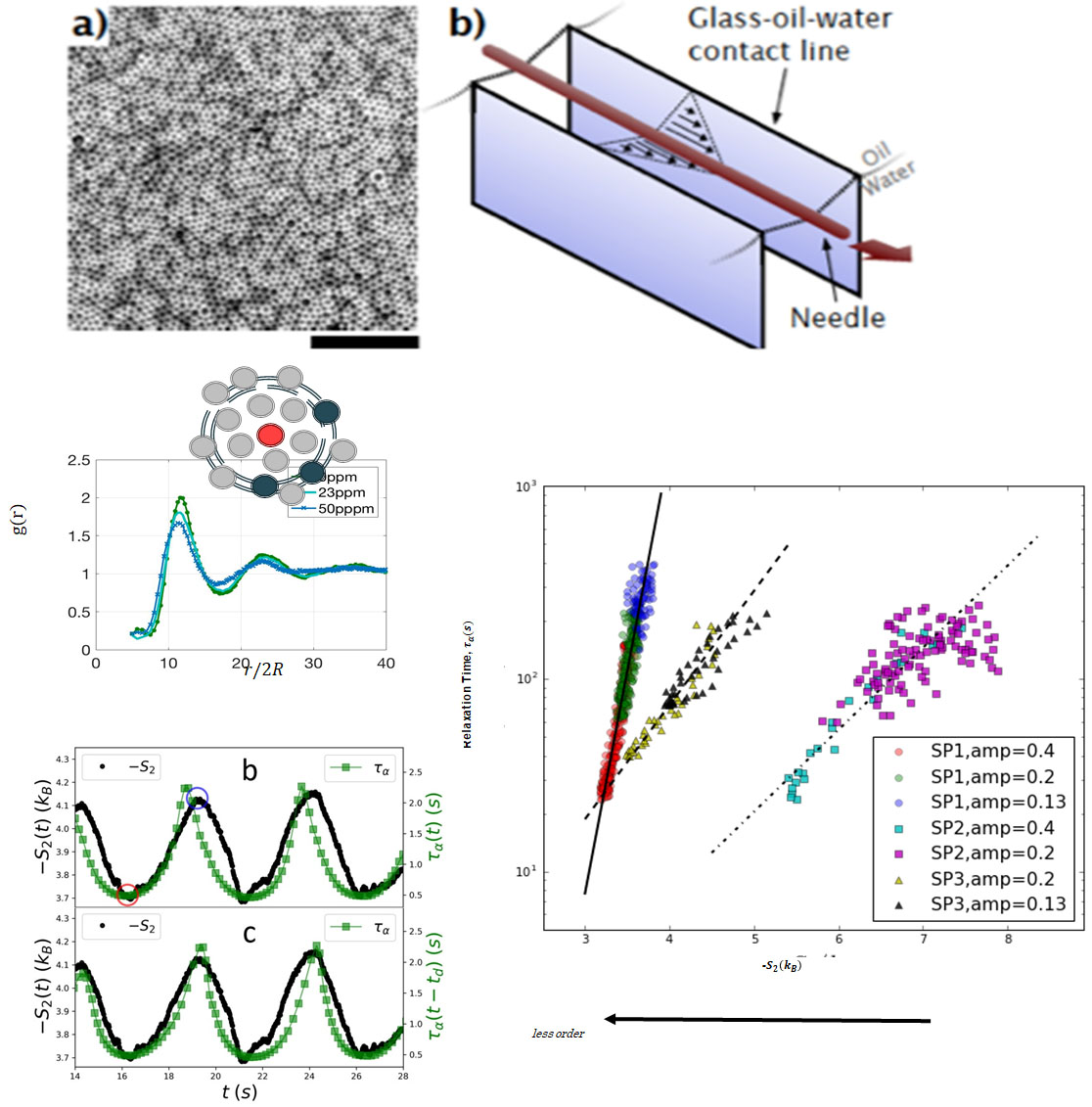Figure a) shows the 2D colloidal sample. This suspension is made with bidisperse (5 micron, 4 micron) polystyrene spheres absorbed at a water-oil interface. The sample is sheared using an interface stress rheometer (Figure b) using a thin magnetic needle. Because the sample is 2D, we can image and track its constituents. This allows us to characterize the microstructure using the concept of excess entropy which we can calculate from the sample two-point correlation function g(r), as shown in Fig. c. We find that there is a persistent lag between the evolution of the microstructure and the sample relaxation dynamics (e.g., alpha-relaxation time). This lag hints at a causal relationship between structure and dynamics. A scaling relationship is found between structure (excess entropy) and dynamics (relaxation) that shows that faster shear-rates lead to shorter shear-induced relaxation and more disordered resultant particle rearrangements.

